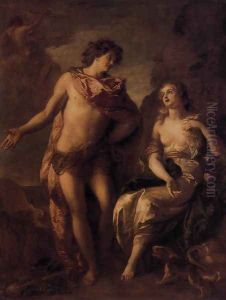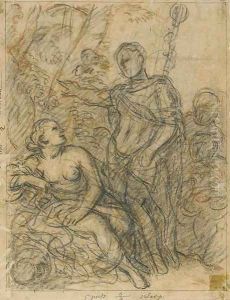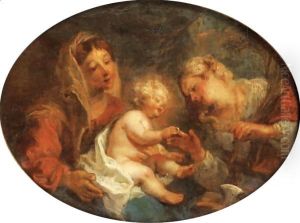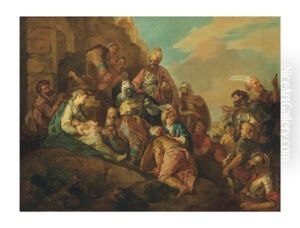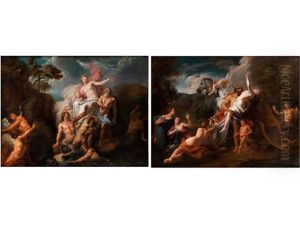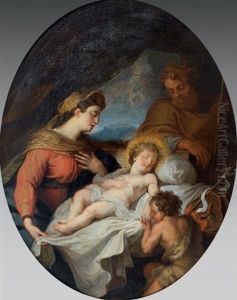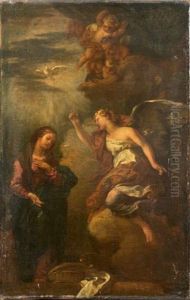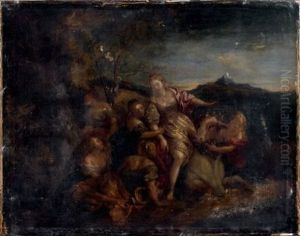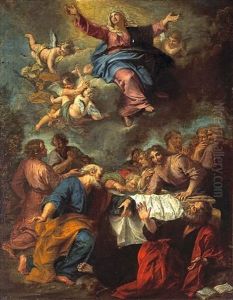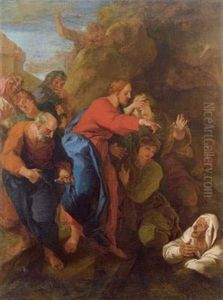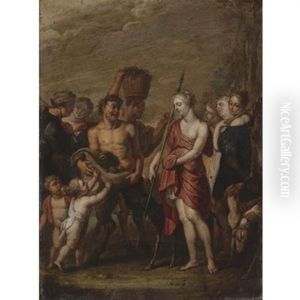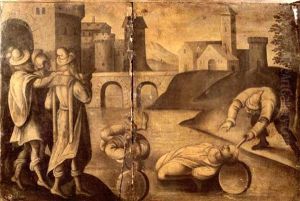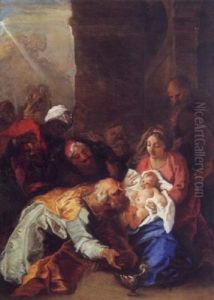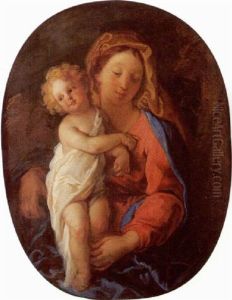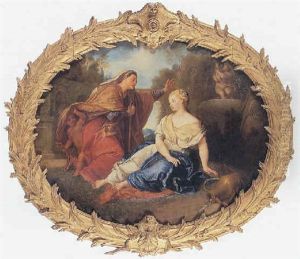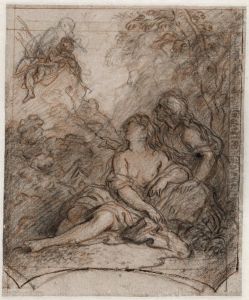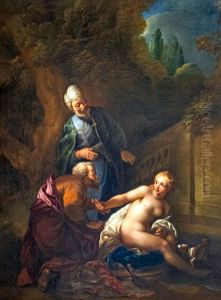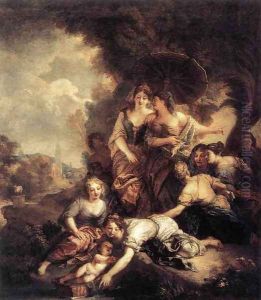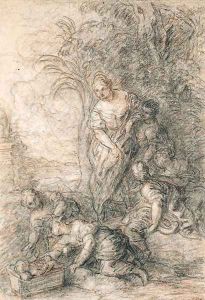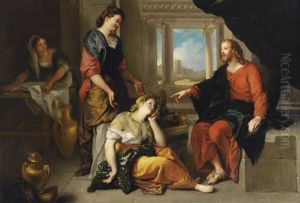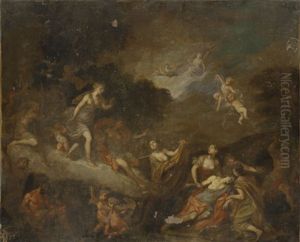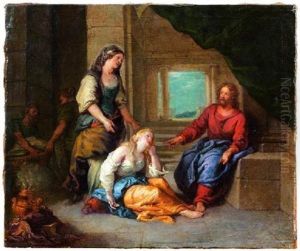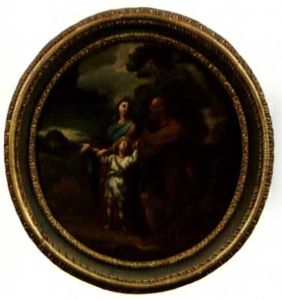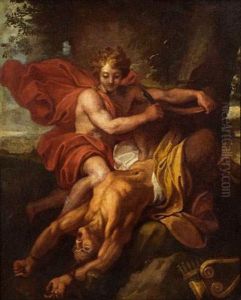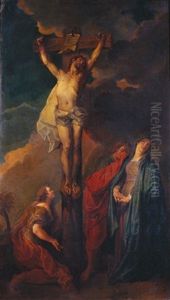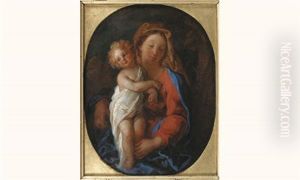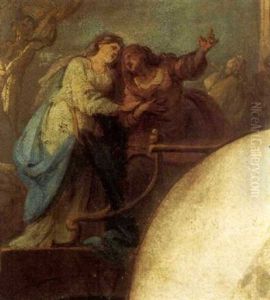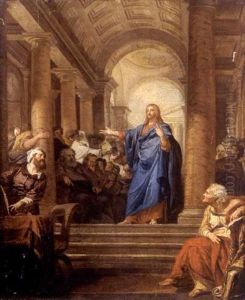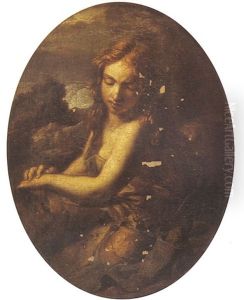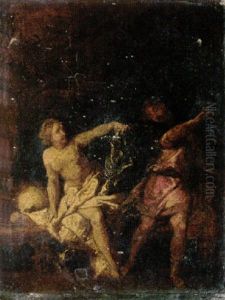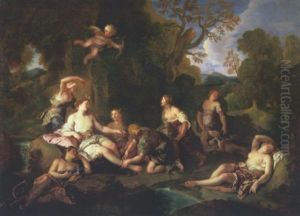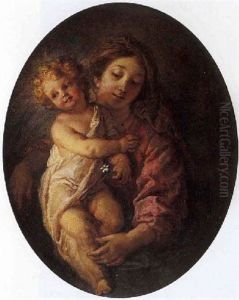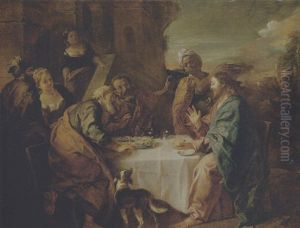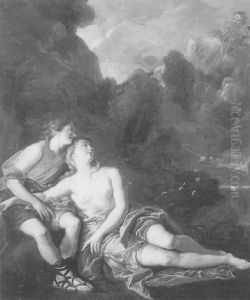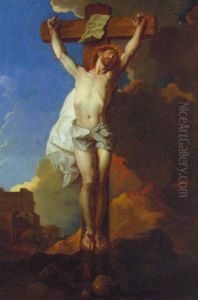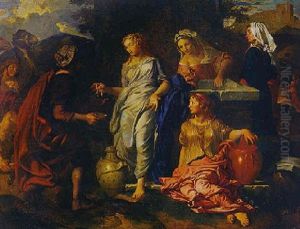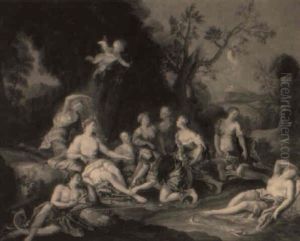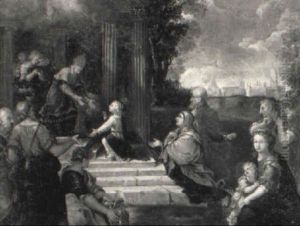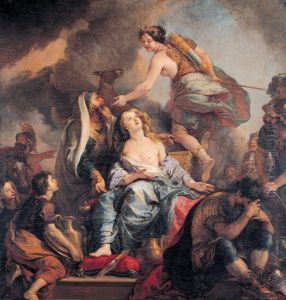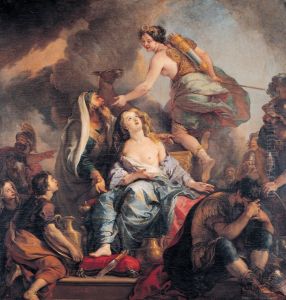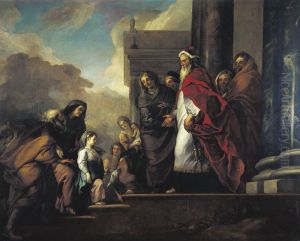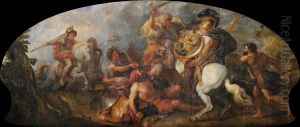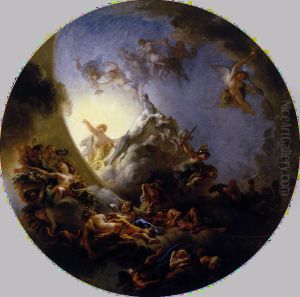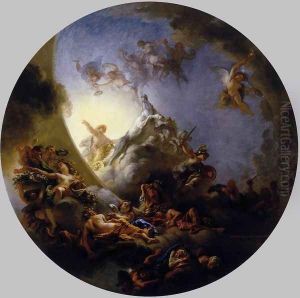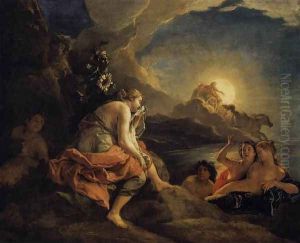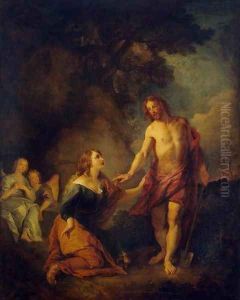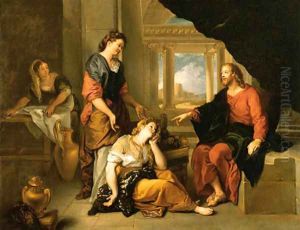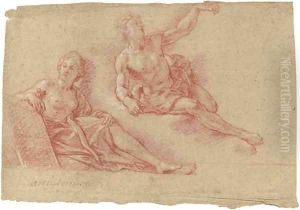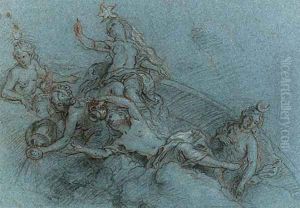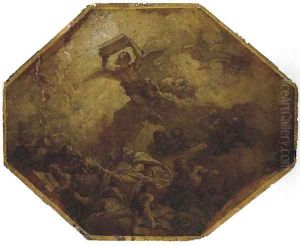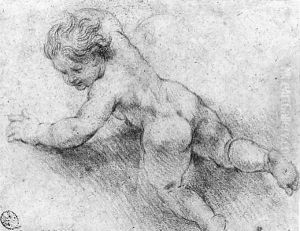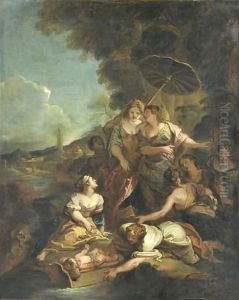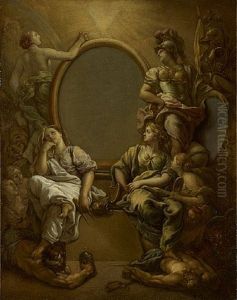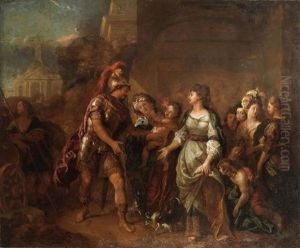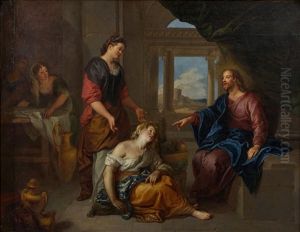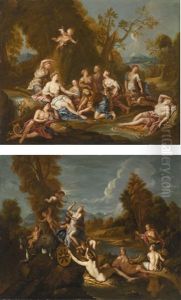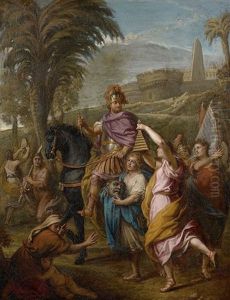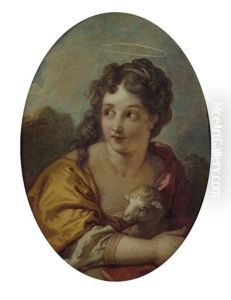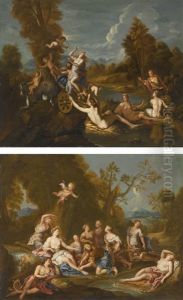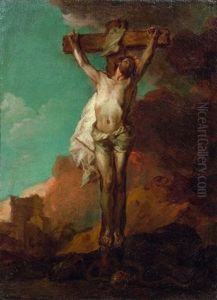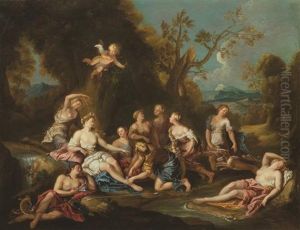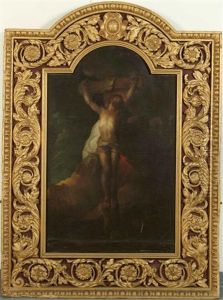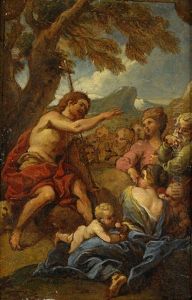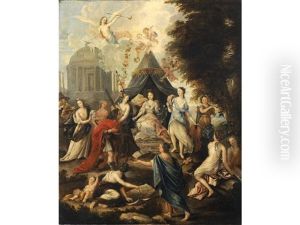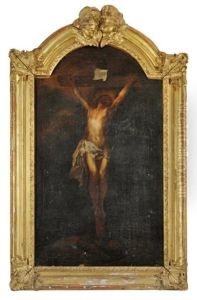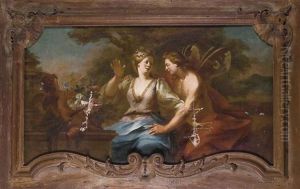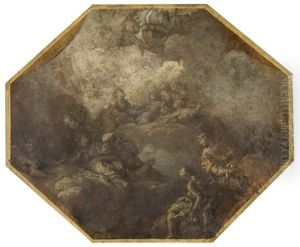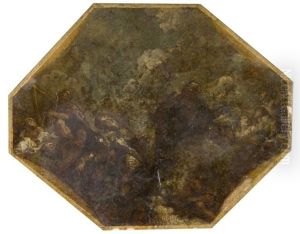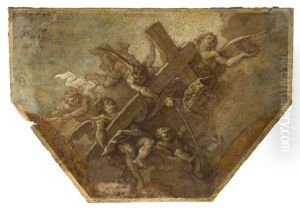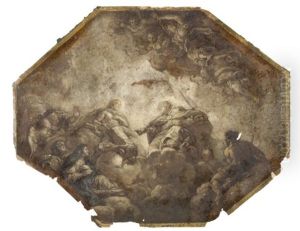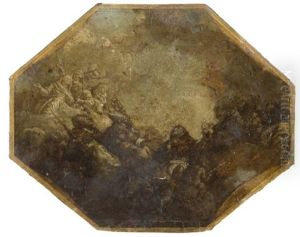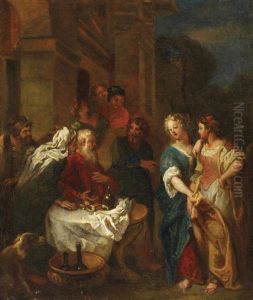Charles de La Fosse Paintings
Charles de La Fosse, born in Paris in 1636, was a distinguished French painter known for his significant contribution to the Baroque movement. He was a pivotal figure in introducing the French Baroque style, characterized by its vibrant colors, dynamic compositions, and dramatic use of light and shadow. De La Fosse's early training was under the guidance of Charles Le Brun, a leading French artist of the time, and later, he was influenced by his travels to Italy, where he was deeply inspired by the works of Venetian painters, particularly the luminous color palette of Titian and Veronese.
His career was marked by prestigious commissions and his role as a teacher. De La Fosse's work included religious and mythological scenes, decorative schemes for private and public buildings, and portraits. Notably, he was commissioned to work on the decoration of the Palace of Versailles, a testament to his mastery and the high regard in which he was held by the French monarchy. His contributions to Versailles include the ceiling of the Apollo Salon, one of the palace's most celebrated features.
Apart from his work at Versailles, de La Fosse completed numerous other important commissions, such as the dome of the Church of the Invalides in Paris, showcasing his versatility and command over large-scale compositions. His style evolved over the years, incorporating lighter colors and a more fluid handling of paint, which would influence the Rococo movement that followed.
De La Fosse also played a crucial role in the academic art world in France. He was a member of the French Royal Academy of Painting and Sculpture, where he served as a professor and was involved in the training of the next generation of French artists. His teachings and artistic philosophy would shape French art for years to come.
Charles de La Fosse's legacy is that of a bridge between the classical rigor of the French Academy and the more expressive, color-driven approach of the Rococo. His death in 1716 marked the end of an era, but his influence persisted, evident in the works of his students and the continued admiration for his contributions to French art history.
